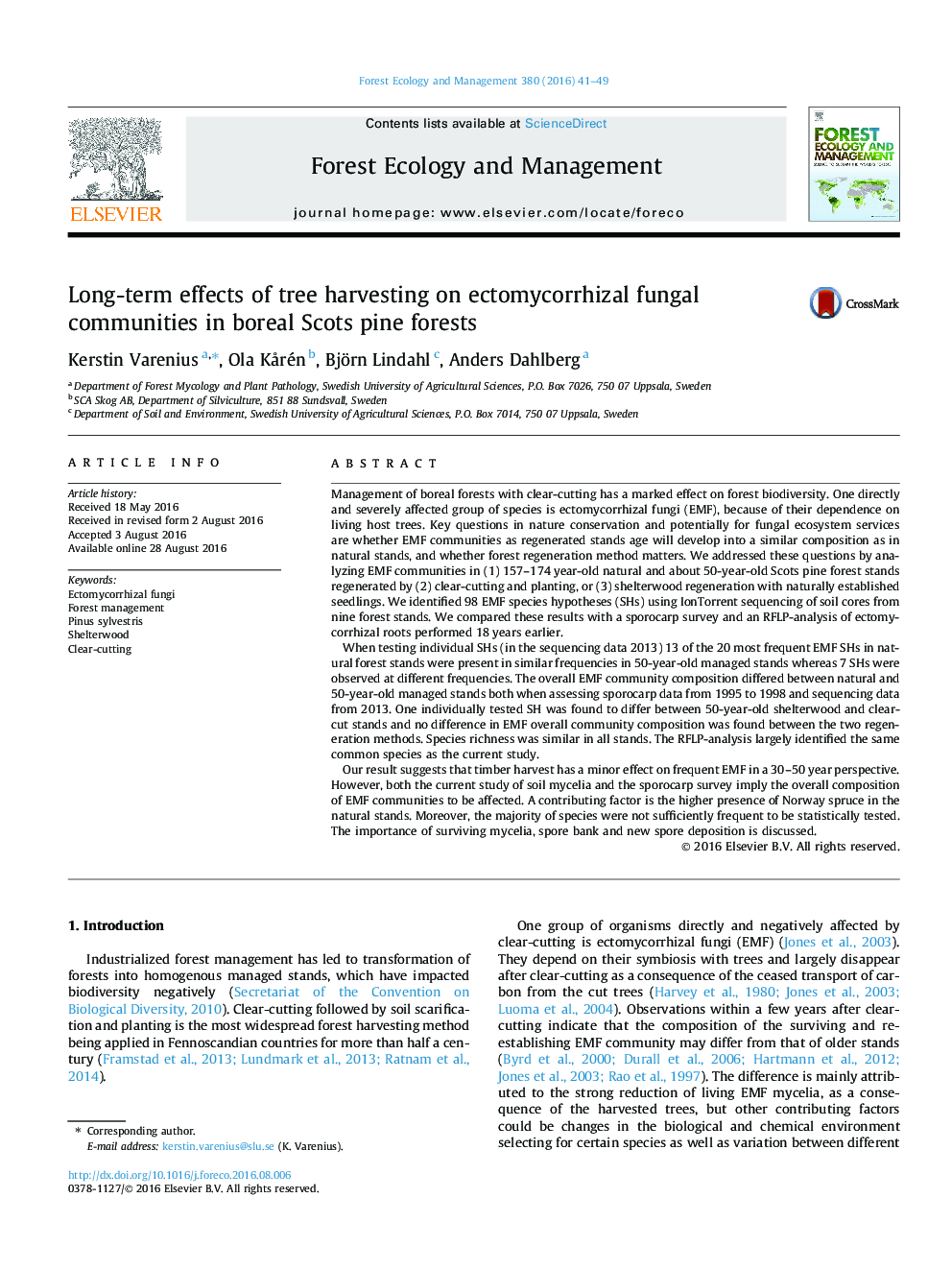| کد مقاله | کد نشریه | سال انتشار | مقاله انگلیسی | نسخه تمام متن |
|---|---|---|---|---|
| 4759659 | 1421378 | 2016 | 9 صفحه PDF | دانلود رایگان |
- The majority of common EMF seems to re-establish 30-50Â years after tree harvest.
- The overall composition of EMF differed between natural and 50-year-old stands.
- EMF community composition did not differ depending on regeneration method.
- Similar common EMF was found with sequencing and RFLP.
Management of boreal forests with clear-cutting has a marked effect on forest biodiversity. One directly and severely affected group of species is ectomycorrhizal fungi (EMF), because of their dependence on living host trees. Key questions in nature conservation and potentially for fungal ecosystem services are whether EMF communities as regenerated stands age will develop into a similar composition as in natural stands, and whether forest regeneration method matters. We addressed these questions by analyzing EMF communities in (1) 157-174Â year-old natural and about 50-year-old Scots pine forest stands regenerated by (2) clear-cutting and planting, or (3) shelterwood regeneration with naturally established seedlings. We identified 98 EMF species hypotheses (SHs) using IonTorrent sequencing of soil cores from nine forest stands. We compared these results with a sporocarp survey and an RFLP-analysis of ectomycorrhizal roots performed 18Â years earlier.When testing individual SHs (in the sequencing data 2013) 13 of the 20 most frequent EMF SHs in natural forest stands were present in similar frequencies in 50-year-old managed stands whereas 7 SHs were observed at different frequencies. The overall EMF community composition differed between natural and 50-year-old managed stands both when assessing sporocarp data from 1995 to 1998 and sequencing data from 2013. One individually tested SH was found to differ between 50-year-old shelterwood and clear-cut stands and no difference in EMF overall community composition was found between the two regeneration methods. Species richness was similar in all stands. The RFLP-analysis largely identified the same common species as the current study.Our result suggests that timber harvest has a minor effect on frequent EMF in a 30-50Â year perspective. However, both the current study of soil mycelia and the sporocarp survey imply the overall composition of EMF communities to be affected. A contributing factor is the higher presence of Norway spruce in the natural stands. Moreover, the majority of species were not sufficiently frequent to be statistically tested. The importance of surviving mycelia, spore bank and new spore deposition is discussed.
Journal: Forest Ecology and Management - Volume 380, 15 November 2016, Pages 41-49
